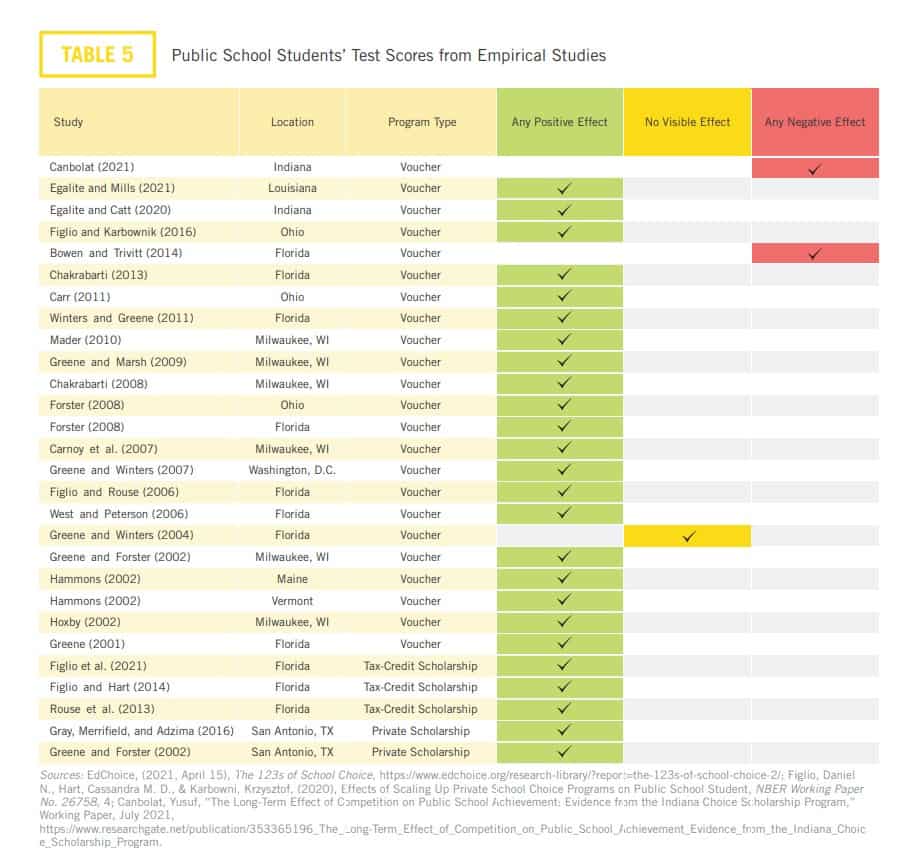
PAY NO HEED TO IDAHO’S CHICKEN LITTLES
By Kaitlyn Shepherd
Three retired Idaho superintendents recently issued a dire warning about the effects of school choice on the state’s public schools. They cautioned, “School vouchers would be detrimental to the interests of the vast majority of Idaho students, especially those in rural areas of the state.”
They also asserted, “The Idaho Legislature came dangerously close to enacting a voucher program last year. … The intent and the consequences of enacting such legislation would be devastating to our already underfunded public schools.”
In an earlier piece, the three former superintendents made similar ominous predictions about vouchers and other forms of education choice like tax-credit scholarships. They claimed, “[V]ouchers and tax credits would hurt rural public schools, and take rural school dollars to fund private school tuition for wealthy kids in the urban areas of Idaho. … There is plenty of evidence that private school vouchers would harm small, rural schools, and especially disadvantage poor students and families in those districts.”
The former superintendents ultimately counseled Idahoans to “reject the legislators and extremist organizations that continue to advocate the dismantling of our public schools.”
These claims make it sound as if education choice programs threaten the very fabric of public education. But is there any cause to heed these dire warnings? Would passing an education choice program lead to these terrible outcomes for Idaho’s students and public schools?
Fortunately for students, parents, and policymakers, a new study, “Who’s Afraid of School Choice?” from EdChoice, shows that the ominous warnings of education choice opponents are both invalid and disproportionate.
The study addresses the validity of opponents’ two claims that education choice is detrimental to public school funding and academic performance. Not only do public schools continue to operate concurrently with education choice programs, but also their funding and students’ academic performance have both increased.
Education choice opponents often argue that choice programs will defund public schools. For example, in 2018, the President of the Idaho Education Association warned that vouchers or tax-credit scholarships “would pull money away from our already under-resourced public schools and funnel it to private schools.” Similarly, the executive directors of the Idaho Education Association, the Idaho School Boards Association, and the Idaho Association of School Administrators argued that school choice programs erode the resources of public schools: “Idaho is already 49th out of 50 states in per-pupil spending, and our public schools can’t afford the further erosion of resources that private school vouchers create.”
However, EdChoice’s study reveals that in the five states with the strongest education choice programs, inflation-adjusted spending per student has actually increased since 2002. In addition, when students leave public schools through a choice program, per-student funding in public schools increases because public schools retain money for students they are no longer educating.
Regardless of the fact that school choice programs increase funding at public schools, it is clear that increased spending on Idaho’s education system has not produced academic results. Although Idaho’s per-student education funding has marginally decreased by 0.81% between 2002 and 2019, instructional benefit spending has increased by 5.4%. Additionally, education spending between 2012 and 2022 has almost doubled. “Adjusting for inflation, spending is up 69% in the past decade” while enrollment has only increased by 13%. Meanwhile, the Nation’s Report Card shows that math and reading scores have remained stagnant or declined.
Education choice opponents also claim that choice programs reduce academic performance in public schools. However, the evidence shows that the competitive benefits of education choice programs actually improve the academic performance of students in district schools.
Of the 28 existing studies examining the effects of choice programs on the academic performance of district schools, 25 of them reported a positive effect. Only one study identified no tangible effect on academic performance, and only two found any kind of negative effect.

The EdChoice study also evaluates whether the severity of the rhetoric opposing education choice programs is proportional to the size and scope of the proposed program. In short, no. An analysis of the debates about education choice programs in West Virginia, New Hampshire, Kentucky, Missouri, and Arkansas — each of which passed an education choice program in 2021 — showed that opponents predicted dire consequences to the public education system even when the proposed choice program was small in scope.
Policymakers can take heart. Contrary to the pronouncements of Idaho’s Chicken Littles, the proverbial sky is not falling, and education choice policies can be confidently implemented for the good of Idaho’s students.
From idahofreedom.org